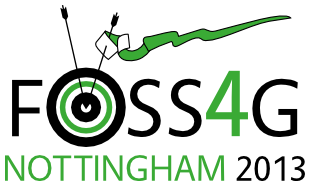Presentation
Deploying A Open Source Web-GIS Within Warwickshire County Council
Jonathan Moules (Warwickshire County Council)
12:30 on Friday 20th September (in Session 30, starting at 11:30 a.m., EMCC: Room 3)
Show in Timetable
Warwickshire County Council wanted a new intranet web-GIS to replace its existing proprietary solution which was failing to meet either the expectations or needs of the users. Unfortunately, because of the current political climate, the council lacked the funds to go out to tender for a new commercial solution - the last one cost in vendor fees alone in excess of £100,000 over three years. The Corporate GIS team had touched on with Open Source GIS before, using GeoNetwork for their metadata needs, but now gave it serious consideration for replacing the web-GIS. Time was set-aside for the project with the GIS Developer set to investigate open source options. A comparison of just some of the almost daunting selection of web-mapping libraries, frameworks, and clients was made and eventually the Heron Mapping Client was chosen for the web-front-end. For the back end, GeoServer was chosen and would work in conjunction with the existing Oracle database. Heron was chosen because it's a client designed for ease-of-deployment, and had no need for anyone to learn a full, complicated, framework. This, combined with its readily customisable user-interface would allow it to be used easily for this project and potentially other web-map projects the council had plans for in the future. As Heron lacked some of the more advanced "GIS-like" features Warwickshire desired ("redlining", select by location, etc), work was commissioned to extend the software, with the aim of this work being contributed back to the community, something Warwickshire feel is part of their social role as a publicly funded body. Some commits also went upstream to other projects such as OLEditor. This marked a notable change from the norm of giving funds to a proprietary vendor only to receive bespoke work that wouldn't benefit anyone else. GeoServer was chosen because of familiarity from a previous project and its user-friendly GUI for most admin things would allow easier training of administrators. The active and helpful community further solidified this decision. Its support for a myriad of OGC standards would also allow Warwickshire to expand its use, including to provide mapping for the desktop GIS's that are used across the Authority (MapInfo, ArcGIS, and potentially QGIS in the future). Warwickshire were pleased to note that participation in the communities was a two-way process: as well as using the software, they identified and reported a considerable number of bugs, some user-experience improvement suggestions, and endeavoured to participate in the mailing list communities to help others. Conversely, experience with the proprietary realm shows that bugs are often swept under the carpet ("That's a feature", "We can't replicate it") and very few commercial offerings come with a active online user community. Because the products are Open Source, Warwickshire also found there were a considerable number of potential vendors for both the Heron development work and the GeoServer support. This was in contrast to the current (and typical) vendor lock-in where once a system has been deployed, there is only one place to get support/development; something that also proves a particular problem if that support isn't up to par. As a result of this work, Warwickshire aims to have a state-of-the-art web-GIS client that can be used by users of all abilities within the authority, ideally with a smaller staff maintenance overhead. Development time from start to finish for the first version will be less than 5 months, with an anticipated cost over the next three years of about £20-£25,000 - a very significant saving to the taxpayer. Future web-GIS and web-map solutions should be created quickly and easily (weeks at most), with Warwickshire aiming to provide several external versions, some for the public, and some for partner organisations later. (Note: This project goes live internally in May 2013; we'll report at FOSS4G whether it lived up to its promise or not.)
